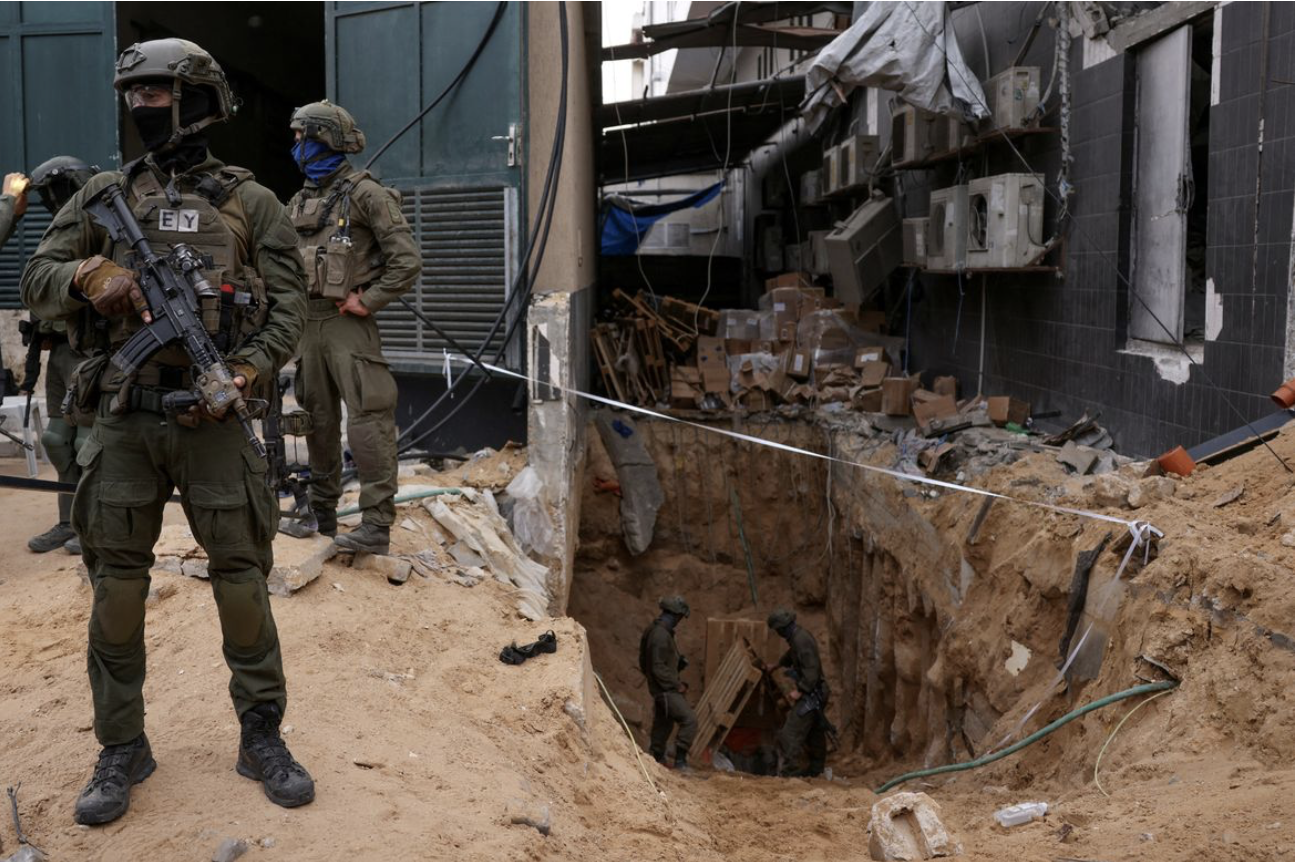Northern Gaza has been flattened. It isn’t just another combat zone. The area will need years of rebuilding before Palestinian civilians can live there.
I saw the fallout from the war between Israel and Hamas during a recent trip with Israel Defense Forces to Gaza City, including the vast network of tunnels around Al-Shifa Hospital, one of the terror group’s unofficial capitals. I moved around the area aboard one of the IDF’s Namer armored personnel carriers.
What happened in Gaza, and particularly at Al-Shifa, will reshape the Middle East, including for Hezbollah and Iran, over the next decade and possibly beyond. While the Mossad blocked Iran from obtaining nuclear weapons for more than 20 years, questions persisted about whether Israel would actually launch a major strike against Tehran if Ayatollah Ali Khamenei gave the order to break out a nuclear weapon. My visit to Gaza answered that question.
But first, what has emerged from the war and the IDF’s taking over Al-Shifa Hospital and Hamas’s underground tunnels there? What paradigms have been shattered?
For the past 16 years, with Hamas controlling the Gaza Strip, Al-Shifa was untouchable. After the 50-day Gaza conflict in mid-2014, many Israeli defense officials said if they could take out the tunnels under Al-Shifa, they could end Hamas or cripple its leadership hiding there. At the same time, the IDF warned that Hamas was storing weapons and running command-and-control operations from Gaza hospitals. Al-Shifa, the pinnacle of those activities, is no longer untouchable. No part of Gaza is.
Hamas’s officials lost their precious underground network at Al-Shifa. They had sent forces and messages through the tunnels and sneaked commanders throughout Gaza City, with Israel’s mighty air force and technological sensors unable to track any of it.
Israel showed Hamas that after the Oct. 7 massacre, it has the power and the will to rout the terror group from even sensitive civilian locations. For years Israel feared using its military advantage against weaker adversaries. Why? Because of the damage rockets could do to the Jewish state’s home front, the cost in Israeli soldier casualties and worries about global legitimacy. With tools such as the Iron Dome missile defense system, Jerusalem avoided playing offense. Now Israel has proved—at least to anyone who sees Hamas’s stockpiles of guns, grenades, drones and other materiel found at Al-Shifa—that it was right all along about the terror group’s abuse of civilian locations.
The U.S. government took Israel’s side when it took over the hospital—something Jerusalem wouldn’t take for granted. This will have implications for any effort by the International Criminal Court to go after the IDF for alleged war crimes.
What Israeli forces didn’t do at Al-Shifa was defeat Hamas completely. Rather, the IDF appears to have let Hamas, including about 200 fighters, escape to southern Gaza. This may have been either to avoid a bloodbath inside the hospital or preserve the possibility of what turned out to be a weeklong cease-fire in which dozens of Israeli hostages were returned. Since the Dec. 4 invasion of Khan Younis, the IDF has been confronting Hamas in a more definitive fashion, with most of the terror group’s fighters and leaders fleeing south.
Israel expects an insurgency in Gaza even after it defeats Hamas. According to the United Nations, 60% of housing in northern Gaza has been destroyed. The extent of the destruction means civilians won’t be able to return quickly. An insurgency could last longer than the six to nine months that defense officials have predicted. The staggering cost to rebuild will make it harder to manage the region after the war and the insurgency, no matter whom Israel puts in charge.
The flattening of northern Gaza also sends a message to Hezbollah in Lebanon, to Tehran and to Iranian proxies in Syria: Mess with us and expect the same. Israelis are now more inclined to believe their country will use force against Hezbollah and Iran if necessary. The Lebanese terror group is far more dangerous than Hamas, given its special forces, mortars and precision rockets. Jerusalem has lived in fear of Hezbollah for well over a decade. What I saw in Gaza City is probably in part why Hezbollah has fired “only” 1,000 times on Israel since Oct. 7 and “only” in the north. The group now believes Israel’s threats of what it would do if Hezbollah crosses certain lines. So does Tehran.
That won’t end the violence against Israel in the Middle East, but it will shift the balance of power. Israel has shown it is willing to go to the mat when pushed too far.
To see this article in its entirety and to subscribe to other articles like this, please choose to read more.
Source: Israel’s Message in Gaza to Iran and Hezbollah – WSJ
 Listen Online
Listen Online Watch Online
Watch Online Find a Station in Your Area
Find a Station in Your Area







 Listen Now
Listen Now Watch Online
Watch Online
